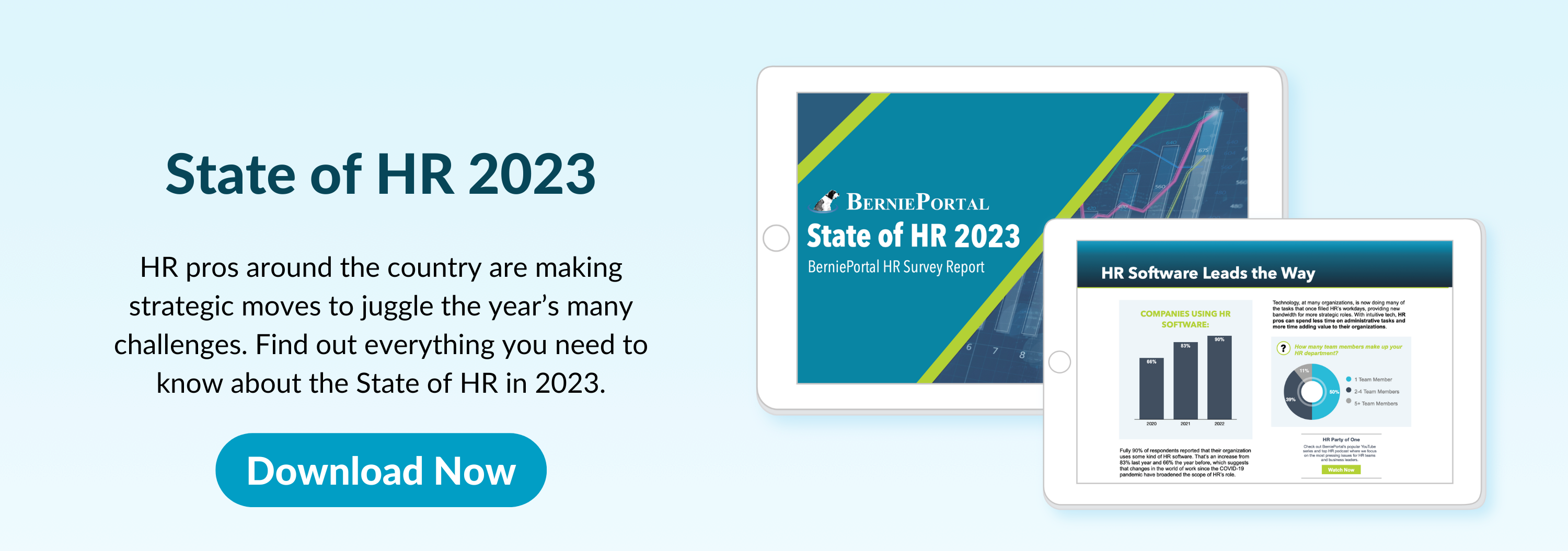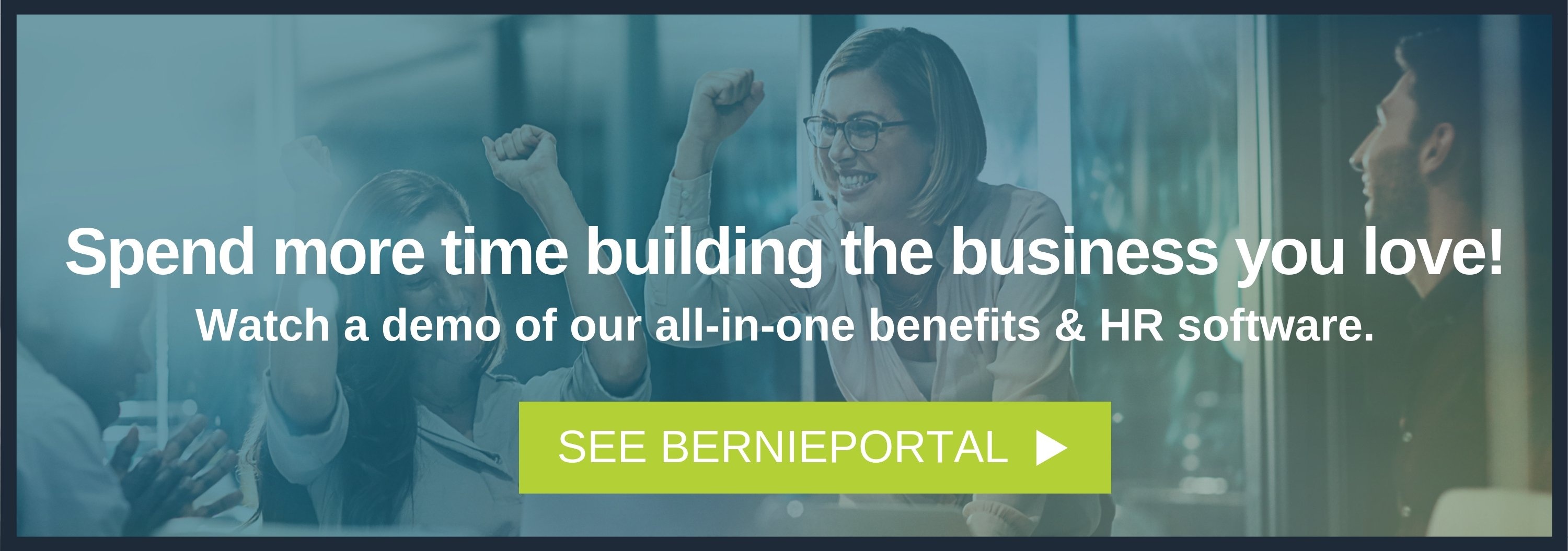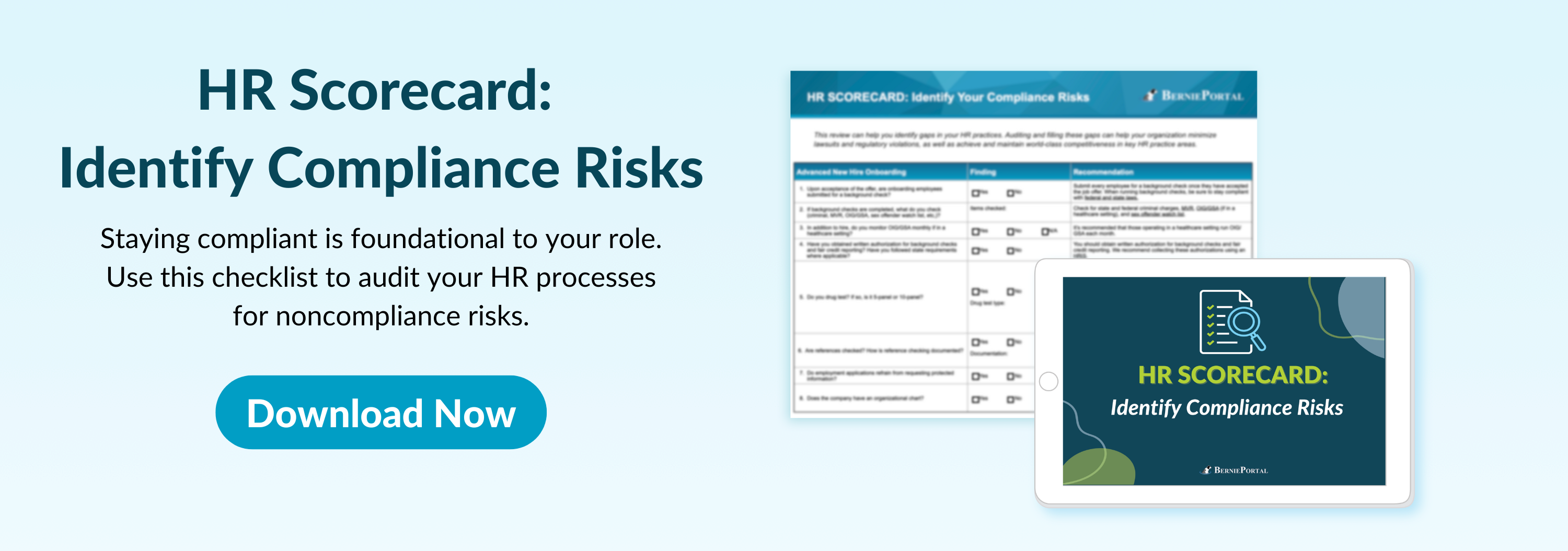
Written by
Aidan Farrish
Aidan is an aPHR-certified writer on the marketing team at BerniePortal. She writes about HR, healthcare, and benefits.
How to Audit Your HR Technology

Does your organization use software or technology tools to track time and attendance, organize documents, manage performance, elect benefits, or whatever else you need?
When was the last time you audited the technology to ensure it’s working exactly as you want?
Auditing the technology you use daily is necessary for your organization to keep going and growing. Read on to learn critical factors to consider when auditing your HR technology, whether you use stand-alone software or a comprehensive HRIS.
How Do You Start an HR Technology Audit?
Okay, grab some coffee, because we all know doing an audit isn't America's favorite pastime and you may need a boost to get started. Understanding that, here's a list of questions to ask yourself to get the ball rolling.
When you design a game plan for auditing your HR technology, here is what you should be asking:
1. Is My Technology an All-In-One System or Standalone Software?
A true all-in-one HRIS will provide features for all your needs. For example, your HRIS should have an ATS that transitions directly into onboarding. PTO and time and attendance should roll smoothly into payroll. Your HRIS should be able to handle every stage of the employee life cycle.
If your HRIS offers “single-sign on,” it’s not truly an all-in-one system. This is because a “single sign-on” system means you are using the same login for multiple platforms rather than one login for one platform. An all-in-one system needs you only to log in once to access your account.
According to our State of HR Survey, around 31% of HR pros use standalone payroll software. Standalone software is any technology tool that is only for one task—one app to track attendance, software to manage benefits admin, etc.
A standalone software handling one part of your administrative needs won’t give you a comprehensive view of your workforce. Even if you have a system to track how many calls employees in a call center make to gauge performance, you won’t know any context needed to support that data, leaving you without vital information about your workforce.
2. Is My Technology Easy for My Organization to Use?
Some HRIS software is cobbled together through years of companies absorbing other companies’ products, leading to a mess you and your employees must untangle with multiple usernames and passwords. However, some products have the tools you need, while others don’t. So how do you choose the best software?
Steve Boese, HR Technology Conference co-chair and tech columnist for Human Resources Executive, urges you to consider whether an HR tech product is comprehensive enough for your needs now—or if an all-in-one system may develop the same tool in the future.
In his recent article, Steve continues to note that if a trendy tool is a good idea, larger companies will swallow independent software to attach to their own systems. But that can lead to further issues.
If your HRIS forces you to keep up with all kinds of login info to access different features they did not successfully integrate, you are getting more work, not less.
Employees may forget this info and ask you for help or become frustrated requesting password changes over and over because they struggle to keep track. Employees will get irritated with their technology and transfer that negativity to you.
3. Will the Software Scale With My Organization As It Grows?
Your goal is to grow your organization. Your HRIS or other tools should scale themselves to your organization so that they grow with you organically.
That means it should have options for adding more features and robust customization. If your teams are growing and you have to manage more people, then you need to be able to sort them however you see best. While you may only have three departments right now, what if you eventually double that, and each team is paid differently?
Josh Bersin, a global industry analyst for HR, predicts areas of growth in the report HR Predictions 2023. He predicts that “embracing a new generation of workplace and HR technology… [may] extend the employee experience into the workplace experience.” But what does this mean?
Organizational growth is usually measured by the number of employees and if that number increases or decreases. But you can also measure growth in experience. If your workforce is becoming more intuned to your organization, then your organization is growing and must have the technology to support that growth.
HR technology should evolve alongside your organization and have features ready to deploy the second your increased success makes you realize the utility of additional tools. With predictions showing more and more organizations bonding with HR technology to nourish employee and employer experiences, don’t let yourself fall behind the curve.
An HRIS that scales itself to your needs, now and in the future, can keep your organization going and growing.
4. Is the Technology's Pricing Transparent?
Some software has hidden fees that can add up. An HRIS vendor should have a transparent pay structure. When you select certain features or upgrade plans, the costs should be explained clearly, with every question you ask answered honestly and quickly.
It’s not easy to talk about money. However, your HRIS vendor should be able to discuss costs without hesitation. An HRIS is meant to improve your role, so your vendor should be committed to helping you in any way they can. For example, BerniePortal is dedicated to providing a clear pricing structure, and our product experts can answer any additional questions you may have with ease.
5. Have I Implemented Every HR Technology Feature?
If you have an HRIS, it may offer you a wide variety of features, and you may not need every one yet. But you never know when something may become a problem, and an all-in-one HRIS should have the solution you need.
Look for an HRIS that has features that carry through the employee lifecycle: an applicant tracking system, onboarding, benefits administration, PTO, time and attendance, payroll, compliance, performance management, and offboarding.
This graphic covers the employee lifecycle to show you how HRIS features should be suited to your administrative needs. Your HRIS vendor should keep you updated on the latest features they develop, plus enhancements to other features they already offer.
6. Does It Have Sufficient Customization for My Needs?
More than likely, not every employee in your workforce is paid the same, works the same times and locations, and has the same benefits. Your HRIS should provide options for customization.
Customization can look different depending on your needs. Suppose you want to sort employees by department, location, exempt or nonexempt status, benefits packages, or management level. You should have the ability to choose from those and more.
An HRIS that offers full customization can keep you and your organization organized. You’ll better understand how your teams work if you have them all organized in a platform where you can check the data. For example, info on PTO requests will let you know if a team tends to request off around specific times. That data could help you and managers decide who goes on which team, so you always have full coverage.
Auditing your current technology may reveal the weaknesses of your system. You need something that makes your role better, not worse. While standalone technology may have benefited your organization in the past, it may be time to switch to an all-in-one HRIS.
Check out BerniePortal, a robust HRIS that offers an applicant tracking system, onboarding, PTO, time and attendance, benefits administration, payroll, compliance, and performance management features.
Read More From HR Experts
Read Steve Boese here for more information on HR technology: Steve Boese at Human Resources Executive.
For more from Josh Bersin, check out his book “The Seven Secrets of the World’s Most Enduring, Employee-Focused Organizations,” and order soon—stock runs out as quickly as it hits the shelf.
Additional HR Resources
You can stay informed, educated, and up-to-date with important HR topics using BerniePortal’s comprehensive resources:
- BernieU—free online HR courses, approved for SHRM and HRCI recertification credits
- Resource Library—tools, templates, and checklists on an extensive list of HR topics
- BerniePortal Blog—a one-stop shop for HR industry news
- HR Glossary—featuring the most common HR terms, acronyms, and compliance
- HR Party of One—our popular YouTube series and podcast, covering emerging HR trends and enduring HR topics

Written by
Aidan Farrish
Aidan is an aPHR-certified writer on the marketing team at BerniePortal. She writes about HR, healthcare, and benefits.
Related Posts
We just wrapped up another phenomenal Weekdays with Bernie (WWB) Conference!
Employees are the heart and soul of an organization, and valuing their opinions can have...
Overhiring amongst large corporations has ceased, and now, the tables are turning on the...
Every year, the month of March is dedicated to honoring women’s tremendous contributions...









Submit a Comment